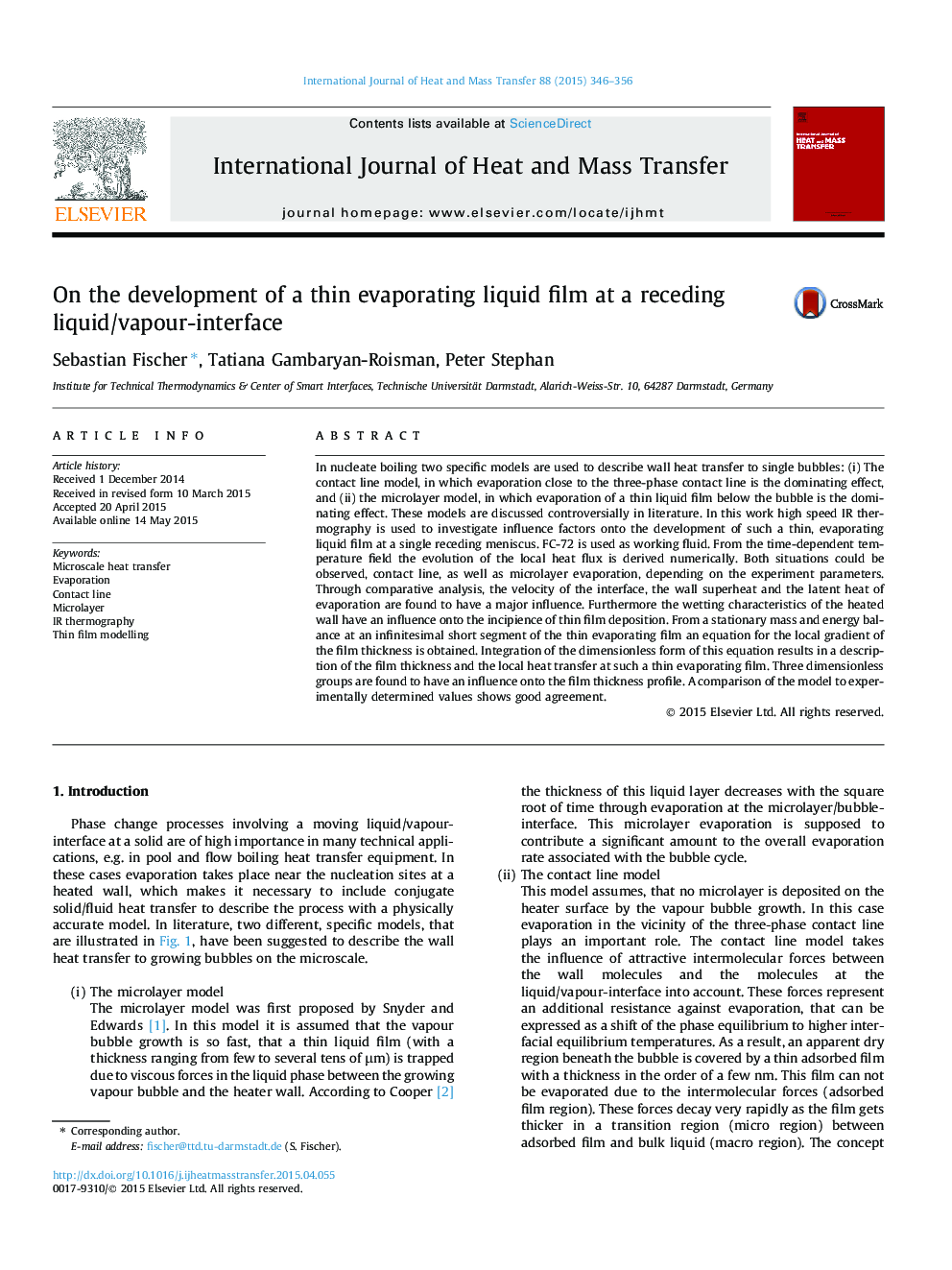| Article ID | Journal | Published Year | Pages | File Type |
|---|---|---|---|---|
| 657029 | International Journal of Heat and Mass Transfer | 2015 | 11 Pages |
Abstract
In nucleate boiling two specific models are used to describe wall heat transfer to single bubbles: (i) The contact line model, in which evaporation close to the three-phase contact line is the dominating effect, and (ii) the microlayer model, in which evaporation of a thin liquid film below the bubble is the dominating effect. These models are discussed controversially in literature. In this work high speed IR thermography is used to investigate influence factors onto the development of such a thin, evaporating liquid film at a single receding meniscus. FC-72 is used as working fluid. From the time-dependent temperature field the evolution of the local heat flux is derived numerically. Both situations could be observed, contact line, as well as microlayer evaporation, depending on the experiment parameters. Through comparative analysis, the velocity of the interface, the wall superheat and the latent heat of evaporation are found to have a major influence. Furthermore the wetting characteristics of the heated wall have an influence onto the incipience of thin film deposition. From a stationary mass and energy balance at an infinitesimal short segment of the thin evaporating film an equation for the local gradient of the film thickness is obtained. Integration of the dimensionless form of this equation results in a description of the film thickness and the local heat transfer at such a thin evaporating film. Three dimensionless groups are found to have an influence onto the film thickness profile. A comparison of the model to experimentally determined values shows good agreement.
Related Topics
Physical Sciences and Engineering
Chemical Engineering
Fluid Flow and Transfer Processes
Authors
Sebastian Fischer, Tatiana Gambaryan-Roisman, Peter Stephan,
